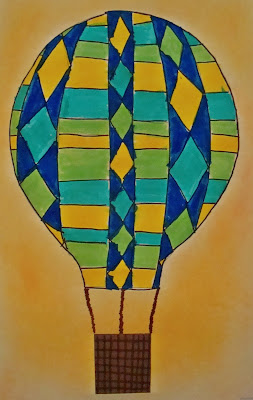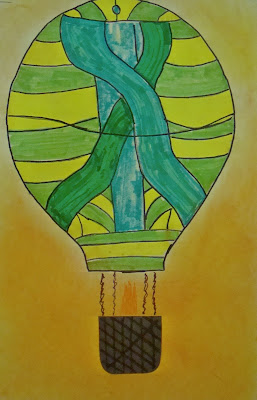Salvador Dali Elephants
You can't get a whole lot stranger than Salvador Dali. As we discussed the Spanish artist known for his surrealist paintings, we we amused to hear about some of the things we learned. We tried to imagine riding around in a car full of cauliflower or that he said that he received transmissions from outer space through his trademark curly mustache. Dali's paintings are dream-like and fun to try to interpret.
Even though we looked at The Persistence of Memory, I decided instead to have us focus on his elephants. The elephants are so interesting with their huge bodies perched atop the long, spindly legs that have bird feet. We also learned about the importance of elephants in Indian society. We let the costumes that are used in annual parades of elephants in India inspire us. The costumes really gave the pictures a pop of color.
Thursday, September 17, 2015
Pattern Fish
I always love to begin the school year with the book Pattern Fish, by Trudy Harris. My first grade students love to show just how much they know about patterns. It's a great cross-curricular book. After we read the book and discuss patterns, students participated in a directed drawing. I try not to use stencils unless I need things to be a certain size. It can be challenging to get the little ones to draw large enough to fill the paper. But we all gave it a go!
I always love to begin the school year with the book Pattern Fish, by Trudy Harris. My first grade students love to show just how much they know about patterns. It's a great cross-curricular book. After we read the book and discuss patterns, students participated in a directed drawing. I try not to use stencils unless I need things to be a certain size. It can be challenging to get the little ones to draw large enough to fill the paper. But we all gave it a go!
So the process went a little something like this. We began with a great big frown. That was the key to getting them to draw large. Then we added a smile. Voila! A fish body. Next we added details, such as fins, a tail and a mouth. Students then had to decide on a pattern for their fish body. After adding all of our details to our fish, we added seaweed. This is a great way to explain overlapping to the little ones. The ocean bottom was added, along with some bottom dwellers and then it was time to trace over our lines with Sharpies.
The next time we met, students added color, remembering to use a pattern with their choice of color. White crayons were used to add bubbles. To wrap it up, each student painted their water using a glittery watercolor. There were lots of oohs and ahhs when they realized their water sparkled. Everyone had such success with this project!
Thursday, September 3, 2015
Subscribe to:
Comments (Atom)












